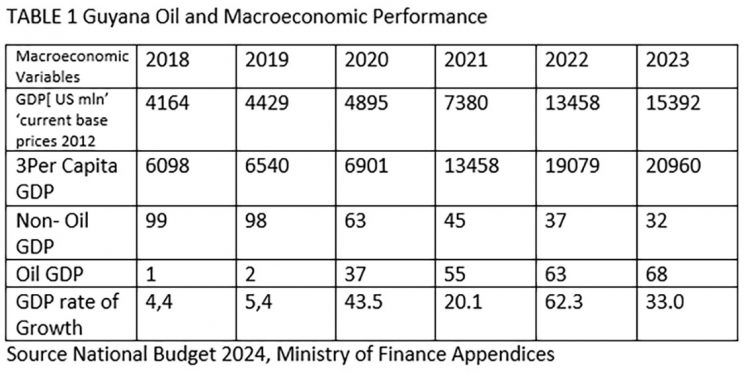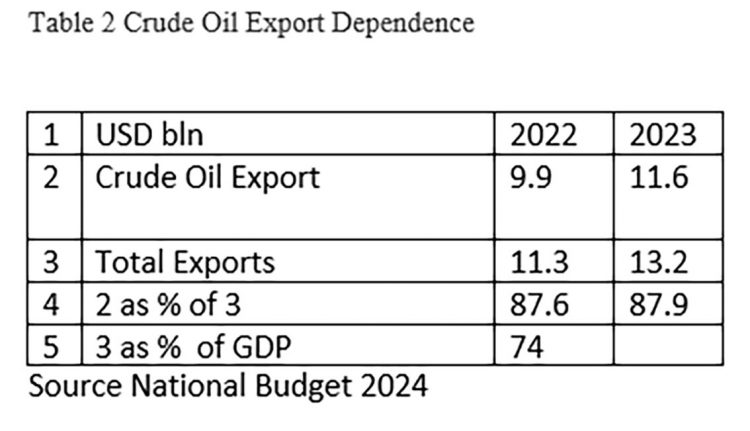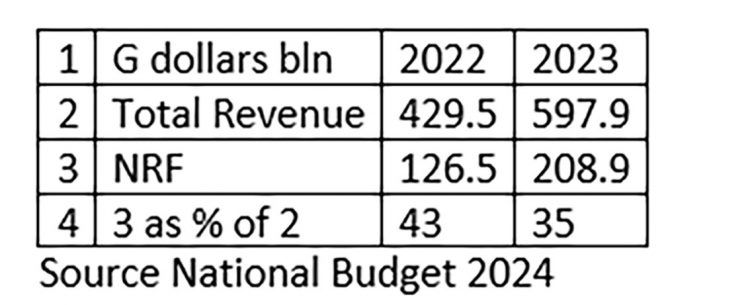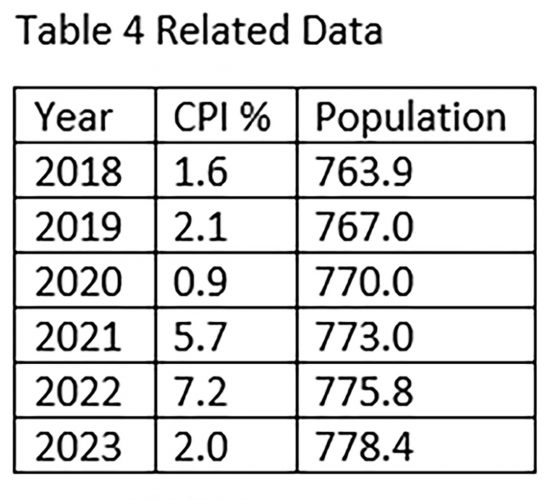Introduction
Regular readers would recall that I used national budget 2023 to portray Guyana’s macro-economic and micro-economic foundations as satisfying the standard definitional prerequisites for a nation designated to be a Petrostate. As acknowledged in that column, there are two such foundational prerequisites. These are 1] a nation’s demonstrated dependence on oil and gas production and export and 2] the consequential emergence of related social, cultural, political, geo-strategic and institutional features, practices, and systems.
Today’s column reveals that, one year later, the official macro-economic data in National Budget 2024 solidly confirms Guyana’s intensification of its reliance on the performance of its emerging oil and gas sector.
GDP Performance
Table 1 below shows that, while Guyana’s GDP, measured in 2012 base prices had trebled in size in the space of three years [2018- 2022] as revealed in Budget 2023 It expanded further, by one- third in 2023. The rate of growth in the first two years after First Oil has averaged about 5 percent and in the succeeding period [2020-2023] a growth rate eight times higher
Perhaps the key performance indicator, KPI, for GDP is the comparative share generated by the oil and non-oil sectors. Table 1 shows the continued rapid reversal in shares of GDP. While prior to the discoveries and set up of production and export operational capability the share of oil GDP was minimal [less than two percent over 2018 to 2019 ] by 2021, it was accounting for 55 percent and by 2023 68 percent
Crude Oil Export Dependence
Table 2, focuses on the connections between the US dollar value [at the recent commencement of Guyana crude oil and gas export] to total exports and also to its GDP. In 2021 Guyana crude oil export totaled US$ 3.0 bln; and by the following year 2022 this amount had totaled US$ 10.0 bln. With total exports valued at US$ 4.4 bln and US$ 11.4 bln respectively, their shares stood at 68 percent and 87 percent respectively. Total exports represented 55 percent and 80 percent in 2021 and 2022 respectively based on the National Budget 2023 data.
Table 3 Government Revenue and NRF Withdrawals










